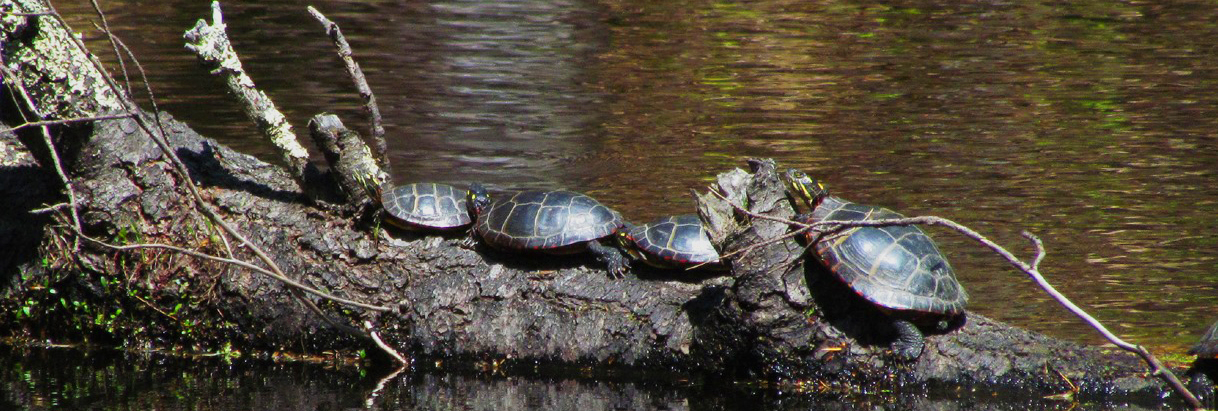Lamprey River Watershed Fish SurveyFish
Delorme's “New Hampshire Fishing Maps” describes the Lamprey River as "...a truly exceptional river, offering a vast variety of fishing. It contains every type of stream and river fish you could expect to find in New England." Fisheries biologists regard the Lamprey as a "reference river", one that can serve as a model of what a natural river should be. The river has also been identified by the NH Fish and Game Department as "the state's most significant river for all anadromous fish species." Anadromous fish, such as river herring, Atlantic salmon, smelt, and sea lampreys, are hatched in fresh water, spend most of their adult lives in salt water, and then return to fresh water to spawn.
Anadromous fish populations have fallen sharply from historic highs due to the presence of many large dams in New Hampshire and elsewhere. The steep walls and fast flow do not allow fish to migrate upriver. To help address this problem, the Macallen Dam in Newmarket has a fish ladder, a structure that allows fish to migrate upstream past man-made dams. At Wiswall Dam in Durham, a new fish ladder was constructed in 2011. The site also includes a "plunge pool" to help fish migrate back down the river safely. The dam at Bunker Pond in West Epping was removed in 2011. The main obstacle at present is the breached dam at Wadleigh Falls in Lee. River herring are successfully swimming up from Newmarket, but the configuration of the falls is too steep for the fish to move farther upstream. With some minor underwater modifications, the falls could become passable to the fish. Research and discussions are on-going. Despite the issue at Wadleigh Falls and thanks to active interventions by NH Fish and Game, the Lamprey River supports one of the strongest runs of river herring on the East Coast.
The lower river is fished primarily for warm water species, such as smallmouth and largemouth bass, pickerel, pike, catfish, sunfish, and white and yellow perch. The upper reaches of the river and many of its tributaries, such as the North and Little Rivers, provide good habitat for cold water species such as brook, rainbow, and brown trout. These fish are stocked by the NH Fish and Game Department for a considerable distance along the river.
The Lamprey can continue to have abundant fish of many species if towns and residents can do the following:
- Protect headwater streams and the catchment areas around them.
- Maintain riverside buffers to provide natural structure, shading, and filtering.
- Design and construct adequate stream crossings so that water flows naturally and without constriction.
- Encourage better stormwater management, focus on filtering run-off through soil rather than dumping water from pavement directly into streams.
- Protect groundwater to ensure sufficient in-stream flow.
- Improve river continuity by removing barriers such as dams, undersized culverts, and stream flow pipes that are raised above normal stream flow due to erosion.
- Maintain large woody material, such as downed trees, in the river.
- Report spring-fed streams; they provide important refuges for many fish species.
For historic information about the fish found in the Lamprey River, please see Appendix B in the Lamprey River Resource Assessment
Click for the Lamprey River Watershed Fish Survey from 2012,

